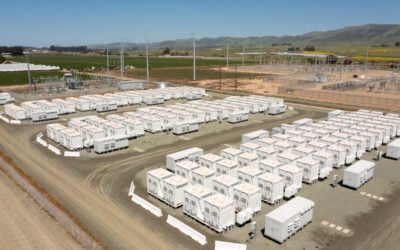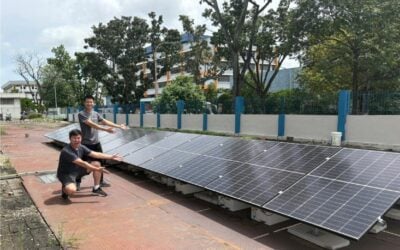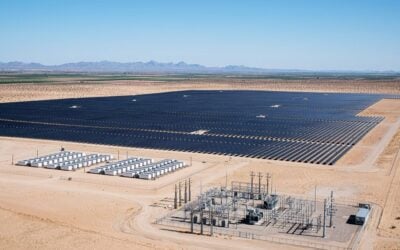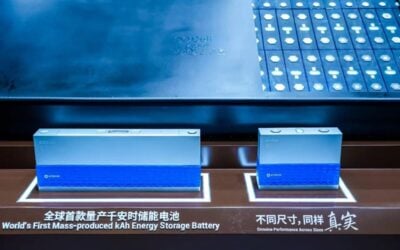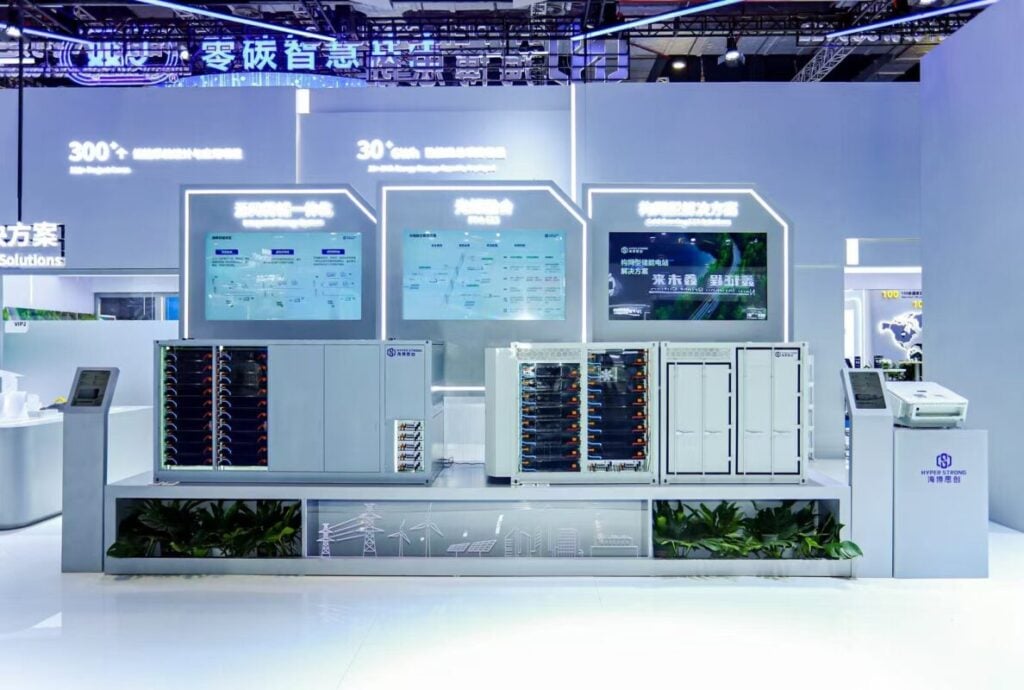
Carrie Xiao’s exclusive reporting from SNEC 2025 continues with the latest in modular battery storage system design and approaches to fire safety.
SNEC, which took place in Shanghai, China, earlier this month, is the world’s biggest solar PV and energy storage event. The first part of Carrie’s report, published yesterday, focused on the growing race to higher capacities and greater energy density in third-generation battery cells from major players.
Enjoy 12 months of exclusive analysis
- Regular insight and analysis of the industry’s biggest developments
- In-depth interviews with the industry’s leading figures
- Annual digital subscription to the PV Tech Power journal
- Discounts on Solar Media’s portfolio of events, in-person and virtual
The boundaries between commercial and utility-scale energy storage are being blurred, revealing new industry characteristics
As third-generation storage cells evolve toward larger capacities, the distinction between commercial and utility-scale storage solutions is gradually blurring. Energy storage systems are now exhibiting modularised components and platform-based architectures.
Changes in energy storage cell capacity and size are creating opportunities for system redesign, challenging the dominance of the mainstream 20-foot container standard.
Modular, platform-based products designed for easy transportation and scenario adaptability are emerging. For example, HyperStrong’s 10-foot energy storage system can accommodate cells of various capacities, making it suitable for both commercial and industrial (C&I) and utility-scale storage applications.
Specifically, at SNEC, HyperStrong showcased its MagicBlock platform and flagship HyperBlock M energy storage system. Featuring a standardised 10-foot modular design, each cabinet delivers 3.125MWh (DC)/3.2MWh (AC). Through flexible combinations of 1-8 modules, the system can be scaled from 6.25MWh to 25MWh.
Additionally, this product features an innovative three-dimensional layout that saves 30%-50% floor space compared to traditional solutions, effectively tackling deployment challenges in space-constrained environments such as urban substations and industrial parks. Its lightweight design (24 tons per cabinet) complies with transportation standards for maritime, railway, and road transport.

In compliance with the requirements of ‘Document No. 136’ on the market-oriented reform of new energy feed-in tariffs, Chint Power has proposed an innovative solution for distributed PV-storage projects.
Leveraging Chint’s in-house commercial inverters, 125kW/261kWh commercial & industrial energy storage outdoor cabinets, and smart energy management system, it effectively caters to the new normal of China’s distributed power generation.
Among these, the 125kW/261kWh commercial & industrial energy storage outdoor integrated cabinet serves as the core product. With an All-in-One highly integrated design, each cabinet delivers 261kWh, ideally suited for office buildings, industrial parks, commercial complexes and other application scenarios.
Ensuring full lifecycle safety for large-capacity cells
Larger capacity and higher energy density represent the industry’s continuous pursuit of cost reduction and efficiency improvement.
Expanding cell dimensions and further boosting energy density have become inevitable directions for cell manufacturers. However, this brings multiple challenges, including material system redesign, upstream-downstream coordination, and performance indicator improvement.
Large-capacity cells are the core approach to reducing costs and improving efficiency in energy storage systems, but they require striking the optimal balance between safety, manufacturing and cost.
REPT BATTERO emphasises that bigger isn’t always better for energy storage cells, and cell development shouldn’t be pursued in isolation. Cells are ultimately designed for system applications, with the goal of helping energy storage stations achieve higher returns while ensuring safety and reliability. This fundamental purpose should dictate key parameters such as the level of spatial integration, energy density, cell dimensions, performance and lifespan.
Dr. Liu Xiaoxiao, a product safety expert at Hithium, stated that the company has established multi-level and multi-dimensional safety designs spanning from cells to modules to systems, ensuring full lifecycle safety for large-capacity energy storage systems.
According to Dr. Liu, Hithium’s ∞Block 5MWh energy storage system completed the world’s first open-door extreme combustion test, setting four unprecedented benchmarks in energy storage combustion testing: the world’s first open-door combustion test, dual 15cm extreme spacing, a deactivated active fire suppression system, and 100% state of charge (SoC) fully-charged state.
At SNEC 2025, Hithium disclosed the complete results of the world-first open-door combustion test of its ∞Block 5MWh system, including the entire testing process, technical details, and authoritative test data.
Notably, since last year, multiple leading energy storage companies have conducted large-scale fire testing (LSFT) on energy storage systems. In the next instalment of this article series, Energy-Storage.news will delve into these tests and their data – stay tuned.

